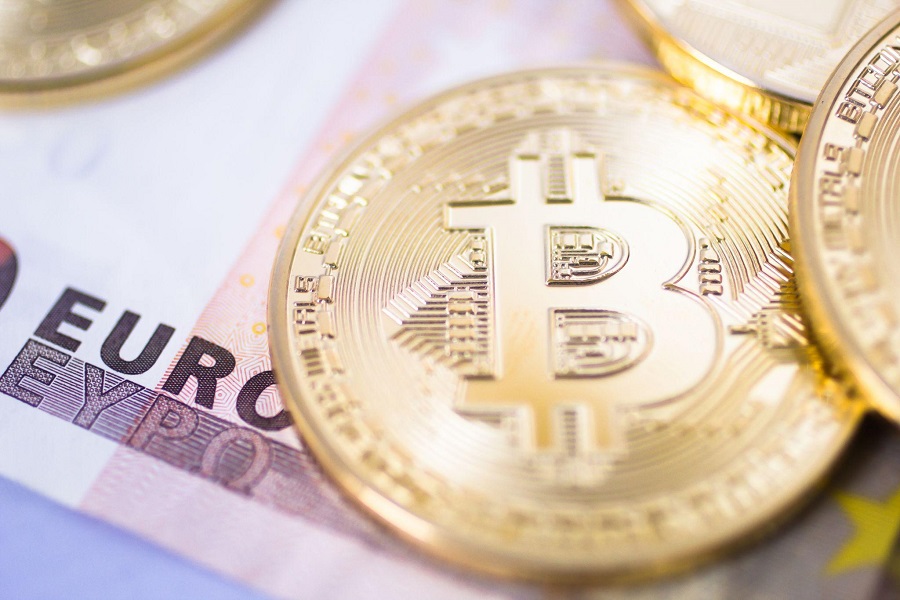Cryptocurrency has been a trending topic during the last few years. Despite several crashes in the crypto market during the last few years, it’s still a tempting asset to invest in. There are many opportunities for investors and traders to use to gain profit from the price movements of virtual currency.
One good solution to consider is trading cryptocurrency futures. The process works similarly to traditional futures trading, but instead of such assets as stocks and bonds, users speculate on the price of crypto. This article explores the topic of futures trading in crypto and how to start as a beginner.
How Crypto Futures Trading Works
Crypto future trading is a type of trade in which investors contract to buy or sell a cryptocurrency asset at a fixed price on a future pre-determined date. Futures trading of crypto allows traders to speculate on the future price of cryptocurrencies and profit from price fluctuations that crypto is notorious for. Thus, such speculation may lead to great gains but also big losses.
The buyer agrees to purchase a pre-determined amount of coins at a specific price on a certain date in the future. At the same time, the seller agrees to sell this same amount of cryptocurrency at that price and date.
When the futures contract is created, the price is agreed upon and remains fixed until the contract expires. The futures contract can be bought or sold on a cryptocurrency exchange or trading platform, and its price can fluctuate depending on market demand and supply.
When traders purchase or sell a futures contract, they have two alternatives. When they buy a crypto futures contract, they are wagering that the price of the cryptocurrency will rise and that they will be able to sell the contract at a higher price to profit. When they sell a futures contract, they are wagering that the price of the digital currency will fall, allowing them to repurchase the contract at a lower price and make a profit.
Investors and traders should understand that crypto futures trading is risky because it entails guessing the cryptocurrency’s future price, which is volatile and hard to predict. If the virtual currency’s price doesn’t move in the direction that the trader has forecasted, the trader loses money.
Futures trading can be beneficial since it allows traders to employ leverage to maximize their prospective gains. Thus, if a trader speculates with leverage and is correct in their assumptions, they get significant profits without big investments.
Before engaging in any trades, people should be aware of the limitation associated with futures trading of crypto and have thorough research of the cryptocurrency market.
The Difference Between Futures Trading And Other Types Of Trading
Futures trading differs greatly from other trading types. For instance, there is such a trading strategy as spot trading (or peer-to-peer crypto trading) that also involve trading cryptocurrencies. However, spot trading involves exchanging one asset (or digital currency in this case) for another, whereas futures trading involves only one asset.
It’s also distinct in that the trader is not directly trading in the cryptocurrency market. Instead, the trade occurs between two users directly, a seller and a buyer. Another significant distinction between futures trading and other types of trades is that the transaction does not occur quickly or based on the current price of an asset. As the name implies, the crypto futures contract is completed at a pre-determined date in the future. Moreover, traders are not required to own or handle the cryptocurrency they’re speculating.
Benefits And Limitations Of Crypto Futures Trading
As mentioned, crypto futures trading can be fruitful, but it may also result in huge losses. Thus, before you learn how to start trading futures in crypto, check out the benefits and limitations of this solution.
Let’s start with the advantages:
- Traders can use virtual currency futures trading as an effective hedging solution against price swings. Futures contracts are used to lock in the digital currency’s price at a specific number. This solution helps to safeguard against price volatility. Moreover, it’s specifically important for big investors who want to protect their money from rapid and unexpected price fluctuations.
- Investing in crypto futures allows traders to diversify their portfolios by adding exposure to cryptocurrencies among traditional assets. They can minimize portfolio risk while potentially increasing profits.
- Trading cryptocurrency futures allow investors to employ leverage. It means that they can trade more cryptocurrency than they have in their account. Profits can be increased if the price shifts in their favor. Leverage can amplify losses, so be careful when using this solution.
The main benefit is that crypto futures trading offers great opportunities to people with an understanding of the market. They can use leverage and gain greater profits. However, there are significant limitations to this type of trading:
- Futures trading is difficult, especially for inexperienced beginners. The process requires a thorough understanding of the market and the underlying technology. Moreover, it entails high-risk tolerance, which isn’t suitable for everyone.
- Crypto prices are extremely volatile. Typically, prices fluctuate dramatically within short periods, resulting in significant gains or losses in a futures deal, making it difficult to control the process.
- Because cryptocurrency futures trading is mainly unregulated, investors have no protection. Future trading often entails market manipulation and fraud, which are difficult to detect.
The key fact is that any trading or investment requires knowledge and experience. Experts recommend researching the topic and using demo tools to test their strategies in safe environments that mimic real crypto market conditions.
How To Start: A Beginners Guide
The very first thing to do is to learn more about crypto futures trading. Once you do your research, you can choose a trading or exchange platform to create an account. You can consider such platforms as WhiteBIT, Binance, Coinbase, etc. Create and verify the account. Once these steps are completed, here’s what you should do:
- Create and test your strategy. Most platforms for trading have demo versions, so you can test and adjust your strategy as you see fit.
- Fund your account. Once you feel comfortable with your strategy, fund the account on the chosen platform.
- Place a trade. Choose the crypto you like, and place a trade. Enter a buy or sell order.
- Monitor trades. Keep track of your transactions. The best idea is to use a trading journal, which is often presented by an exchange or trading platform as a useful tool.
The bottom line is that you should start by trading small. Make yourself more comfortable with the market, and learn how it works. Once you feel more at ease, keep trading as you wish. Note: don’t spend more than you can lose. Cryptocurrency is volatile and may lead to big losses.

